 True happiness, according to Epicurus, was not found in indulgence or excess but in the state of ataraxia – the untroubled mind, the freedom to focus and think with clarity. Ed Smith (former professional English cricketer & journalist) remembers being taught this principle at 18, when a cricket coach told him what makes great players distinct is that they are capable of “the absence of irrelevant thought”.
True happiness, according to Epicurus, was not found in indulgence or excess but in the state of ataraxia – the untroubled mind, the freedom to focus and think with clarity. Ed Smith (former professional English cricketer & journalist) remembers being taught this principle at 18, when a cricket coach told him what makes great players distinct is that they are capable of “the absence of irrelevant thought”.
The smartphone is a machine for introducing it as often as possible. The business model that underpins it is that human attention must be broken, again and again. Silicon Valley has conducted a 15-year, unregulated experiment on the brains of most of the world’s children; Jonathan Haidt, author of The Coddling of the American Mind, wants to call time on it.
Haidt cites Kurt Vonnegut’s 1961 short story “Harrison Bergeron”, which envisages an American dystopia in which being excellent at anything (and therefore un-egalitarian) has been made illegal. The preferred weapon of “handicapping” exceptionally bright people is to make them wear an earpiece which buzzes roughly every 20 seconds to sabotage sustained concentration. Stopping attention is the lever by which intelligence can be flattened.
The realisation that the use of smartphones has the dark side of being the vehicle for not only pathological distraction, but also cyber bullying, has been well documented. It has been shown that confiscation of these phones when arriving at school and then returning them after school has had a positive effect. However, if you just ask the students to turn their phones off, but allow them to keep them whilst in school, then nothing much changes.

The importance of there being no exceptions means that the school must have a protocol for emergencies which much be continually reinforced. As for contacting parents via phone, the haven for manipulative bullies’ whining, then there is no reason why “little Johnny” cannot be filtered through a designated cohort of teachers.
As one source has said, “the stages of panic, grief and ultimately some level of acceptance” are the student reactions to such a ban.
Yet the dependence on a well-balanced teaching staff is paramount for successful implementation..
I have two anecdotes which exemplify the problem of teacher dysfunctionality.
The first was when I was in junior school, either ten or eleven years old. Our teacher, who was very emotionally labile, sent the whole class of about 25 boys to the Principal to be caned. I remember us boys, all clustered in front of the Principal’s study in a dark corridor. The Principal came out, took one look and sent us all back to the classroom. He then asked the teacher, who by now was a blubbering mess, to come to his study. The Principal was a very calm, authoritative man; he always showed understanding. The teacher left the school soon after.
The other time was when one of my sons, aged seven, was refused permission to go to the toilet on more than one occasion. My then wife and I confronted the teacher, whose truculence disappeared under some very tough talking, but still did not admit any fault. The then Principal, unlike my junior school Principal preferred to look away. That was the only time we ever intervened in our children’s progress through school. We did not have confront the teacher again despite the weak Principal.
Later when I ran a community health program, I remember the rationale given for having a school nurse. One could monitor the pupils seeking school nurse support. If, in the extreme example, large numbers from one class presented at the sick bay, it is an indication that such a class may be dysfunctional; on the other hand, if no children came to the sick bay, then was that undue denial by the teacher to seek the school nurse care, rather than believing it was a very healthy class?
One may question raising these extremes in teacher behaviour, but banning smartphones requires an acceptance across the community, despite differing attitudes and behaviour of school staff – until it becomes the community norm. In turn, this requires a very narrow “behavioural corridor” on how this ban is administered.
Otherwise, as I try to write, I can hear that intermittent Vonnegut-generated buzzing in my ear, but I refuse to be distracted. So should all children be afflicted by this seductive but essentially dystopian device in school. You know talking face-to-face is a way of confronting life and forcing the bullies out in the open.
I was bullied on my first day at school by a child who later became a respected member of the clergy. My father who came across this interchange, made an on-the-spot decision. He had me taught to box – never had to use that skill. Knowledge was enough. But what if I had grown up in this era?
Albanese – 2015
We’re used to seeing a few slip-ups and gotchas in Question Time, but yesterday Anthony Albanese shocked us with a particularly poor choice of words.
The Labor MP has copped some criticism over apparently urging one of his colleagues to “smash her!”, when rising to grill health minister Sussan Ley.
As member for Ballarat Catherine King rises to question the coalition MP, Albanese can be heard to casually call out the aggressive phrase from the front bench, with laughter from colleagues following. The choice of words is at odds with the opposition’s current focus on addressing domestic violence.
Hot Copper may have reported this 2015 incident, but I have seen the video, which now seems to have disappeared from the Web. It is very unappetising spectacle of a snarling Albanese.

From my simple point of view, this man who has publicly advocated a violent act against a woman is totally unacceptable to be Prime Minister of this country; neither he, nor those who laughed along with his unappetising snarler should be allowed to remain in Parliament by their electorates.
Thus, I do not buy the argument why single Albanese out when other Parliamentarians have an appalling record in this area as well. I agree one cannot ignore that. However, Albanese is the Prime Minister, and he is constantly saying that men should be respectful towards women. He has demonstrated in the incident quoted above to be anything but that. A Prime Minister should be called to a higher standard.
It is a challenge for the Labor women to have as their leader a man who advocated violence against Sussan Ley. I’ve been around long enough to hold the view that an outburst is unlikely to be a single episode, and was there any apology?
The Tragedy of Sydney
After consideration of all the material, I declared that it was a terrorist incident – NSW Commissioner of Police Karen Webb.
I penned this just after these two incidents and then put it away to see what happened after the acute reaction had subsided, and whether I would change much. The answer: not much. Shortened it and modified the invective.
I have witnessed the emergency responses to the horror which dogs every community when faced with the lone mad person, invariably male, who goes on a rampage killing multiple people senselessly. In the case of the Bondi incident, he may have been a paranoid schizophrenic completely delusional, but he was killing people willy-nilly, until a senior policewoman in shirt sleeves shot him dead.
However, what struck me was these men resembling at a distance Michelin Men in black with very large guns rolling across the ground apparently after the fact. As the camera zoomed in, these guys were wearing black balaclavas, as if they were about to rob the Centre; and since they appeared to be made to look anonymous, I wonder how you distinguish them from terrorists or just well-organised thieves? Just a question of seeking information.
Then, on top of that, a 16 year old teenager stabbed an Assyrian Church priest. Subdued by the congregation, the teenager lost a finger in the melee. Belatedly, police turned up implying that they were there to sort out the situation when it was mostly over. All that needed to be done was to quieten the crowd which had gathered and ensure the safety of the injured assailant. Instead, it was reported that the police used tear gas.
The violence on that Monday night was as disgusting as it was perplexing, given the police were there to help Bishop Emmanuel and to investigate his stabbing.
The reason for this deployment was the responsibility of the accidental Commissioner, the former traffic cop, Webb. She declared this stabbing an act of terrorism whatever the logic, an over-reaction ensured. Even the Premier seemed initially to admit her order was an over-reaction. The teenager was known to police and had convictions, Once the teenager was found out to be Muslim, then the story of this teenager being a part of a terrorist cell grew and in turn justified Webb’s order.

The Assyrian community, irrespective of which Assyrian church they followed, had gathered and suddenly the government had sent the police to presumably arrest the “terrorists”. The reaction of the community was not one of submission but one of fury.
What happens when people in uniform arrive, for no apparent reason, to confront the crowd; unless there is demonstrable leadership it is not long before a crowd becomes a mob. In this case, there were injuries to people. People were taken to hospital including two police. The mob jumped all over the police cars, rendering half of them unusable. Why were there so many police cars (the actual number seems to vary); what was the reason, given it was supposed to be one lone teenager terrorist attack?
It seems some of the police were not dressed as black Michelin Men but still with their Perspex face shields and weaponry presented an ominous sight. Yet they appeared to be overwhelmed by the mob despite their use of tear gas, if the reports were true.
Over the following month, they hunted down the protesters displaying to the media that it takes at least five heavily armed officers to arrest one of these rioters.
I was faced with a potentially nasty situation in 1960. The annual end-of-term engineer-commerce students’ marbles match – an excuse for a sort of Eton wall game that was held on the Commerce lawns outside the University Union.
The Commerce lawns in a wet May were, to say the least, very soggy. The ground was once a lake and soon degenerated into a muddy confrontation. It was tolerated as a way for students to let off steam (remembering the University was then a predominantly male institution). The police kept away. However, on this occasion, some idiot smashed the fire alarm, and before long with bells ringing two fire engines arrived, bowling into the students spilling onto the roadway. This minor show of aggression turned ugly when one of the students tipped a bucket of mud through the window of the one of the fire trucks.
Then the confrontation threatened to escalate as these burly firemen got out the vehicle, some looking as if they were spoiling for a fight. I remember very well three of the student leaders, one of whom was myself, wading into the crowd to try and calm the situation down. I remember that the firemen were persuaded to climb back into their vehicles, and they left without having to call in the police.
Yes, we then had to go down and face a choleric fire chief, who dismissed our apologies. We all left, were interviewed by the media on the footpath outside and it was front page news the next day. Then we all went on first term holidays and the furore died down. I don’t think these university students were considered terrorists. I was helped by my two fellow students in calming down the situation – one became a Supreme Court Judge and the other a Federal Court judge. That episode taught me a great deal. By the way, the University administration did not intervene; they left us to sort it out.
Thus, the local Federal Member for Fowler, Dai Le, seemed initially the most sensible in seeking to calm down the situation. The local community has followed this course advocating reconciliation and peace. Yet the media persisted with the allegation that this was a terrorist attack.
The Assyrian priest forgave his attacker, the epitome of Christian behaviour.
Reading between the lines, the response of Burgess, the spy chief, seems to be ambiguous about this incident being a terrorist threat, but once someone in authority “cries wolf”, especially when she had been under serious criticism on other matters related to her lack of leadership, it probably does not help to directly criticise another senior public servant.
Invoking an incident as an act of terrorism can stigmatise a community and sow unnecessary anxiety and alienation from the instruments of government – the police being one example.
The Premier talks not about conciliation, unless it is his meaningless term “people of faith” but says he will confront the community with “the full force of the Law”. Well, if 50 police cars and the anti-riot squad are not the “full force of the Law”, what is? To my mind, it is the lone policewoman, who brought to an end the ghastly events in Bondi Westfield by confronting and shooting the murderer. That is the full force of the law, not all the other macho trimmings that seem to obsess governments. The policewoman exhibited two qualities – courage and an ability to assess the situation correctly; little information but with impeccable induction-deduction that led her to come to the right conclusion quickly.
Terrorists presumably are not banshees. The terrorist groups must be known. In this instance, where was intelligence from ASIO, whose mouthpiece tells us they know everything, and should have a clear idea of the potential danger of what we may name ‘Teenage Terrorist Group”.
Otherwise, what value are Australia’s security services providing? Australia pays a high price for its security services. For me, we do not pay this money for scaremongering or “cloak and dagger” farce, but for a service which provides reassurance to the community without complacency. The question arises of why these terrorists are allowed to roam freely in the community, once identified? I can conjure up reasons, related the cost of incarceration. Yet Australia has had successive governments prepared to spend astronomical amounts of money on dodgy contractors to guard people who come here in boats and are then imprisoned. Are they all terrorists? How do these people contaminate Australia?

In 1979, when I was staying in Broome, there was a recently-beached Vietnamese lugger in the mangroves in front of the motel where I was staying. The Fraser government welcomed the Vietnamese refugees, and by doing so enriched our Australian community. Would Dutton have done the same, but of course he was only nine years old at the time?
I have tried not to make too many value judgements but ask questions. The paradox is of media alive with misinformation and not challenging what appears to me to be gaps in the logic of government, the gaps being filled with cliches, often repeated in this opaque shroud of not knowing what to do, but afraid to let the community in on that secret! Secrecy appears to be a cover for our leaders for inaction and hoping the whole matter will go away – or worse result in a cover up?
Boondoggle Stadium Hobart
During the late 1920s and early 1930s, Boy Scouts at summer camps participated in the latest scouting craze in which boys braided and knotted colourful strands of plastic and leather to fashion lanyards, neckerchief slides and bracelets. Eagle Scout Robert Link of Rochester, New York, coined the term for this new handicraft, “boondoggling”. Chris Klein 2018
Arguably, the AFL should be first in line to fund the construction of an AFL stadium, rather than kicking in less than 2% of the proposed $800 million total. However, it can also be argued that the project will bring thousands of jobs, urban renewal, a massive tourism boost, a visible pathway for young athletes, and lots of footy for the fans.
Unfortunately, this isn’t a sitcom. Australia is facing a housing affordability crisis, and a cost of living crisis, both of which are compounded by rising inflation. As such, many Tasmanians aren’t over the moon about the announcement, and they’ve voiced their disapproval about the project publicly. Chris Sheedy June 2023
You can guarantee the sun will rise in the East. Unbackable odds.
Equally, once the Labor Opposition elected a bloke to replace a sheila as its Leader, it was London to a brick that the Tasmanian government would agree to build a new stadium at some exorbitant cost – any current estimate is just a number which will be exceeded. No worries you blokes, see on the plans, the luxury lounge where we can watch the games in comfort, popping the corks and tasting the best of Tasmanian fare. Better than any Chairman’s Lounge.
In 2023 Albanese, in stumping up $240m of taxpayer money, tried to sweeten the sandwich by saying that the project would “include social housing and commercial and recreational spaces, but there was no extra information on how many houses would be built, or how a business centre would fit on the site and in the budget.
Crown land at Regatta Point will be developed through a private-public partnership, including affordable housing, housing for essential health workers so close to the hospital facilities here.” It is a wonder he did not promise a multi-purpose religious centre as well.
I would never say that the AFL is trying to blackmail Tasmania, nor that a “business centre” mentioned by Albanese be a casino. After all, all this extravagance must be underwritten by some source of revenue (aka gambling), unless they can induce one of the oil states or some hedge fund Croesus to sponsor the team.
After all, the intention is to play seven games a year in Hobart and four in Launceston. There is a time-honoured Tasmanian government bankrupting strategy, that if Hobart has one, Launceston must have one also. Seven games a year! What was the cost again for such a projected use? The cost the length of a piece of string is at the mercy of the builders and the construction unions.

The team, rather than being called the Tasmanian Devils, would be better called the Tasmanian Boondoggles, when the team enters the League in 2028, then for a decade to be the chopping block for all the other teams, while the country burns under the burden of climate change. And by the way, just check the projected sea levels at the construction site.
Mouse Whisper
Along a certain English road, there was a sign which read “Cat’s Eyes Removed”. An official sign apparently. The informal sign down the road read “Mice Very Happy”.
The Boss roared with laughter. What was funny about blinding cats even if they have benefited by English cousins? And why would they publicly announce such terrible things? But then, it is the same nation that made fun of three blind mice.


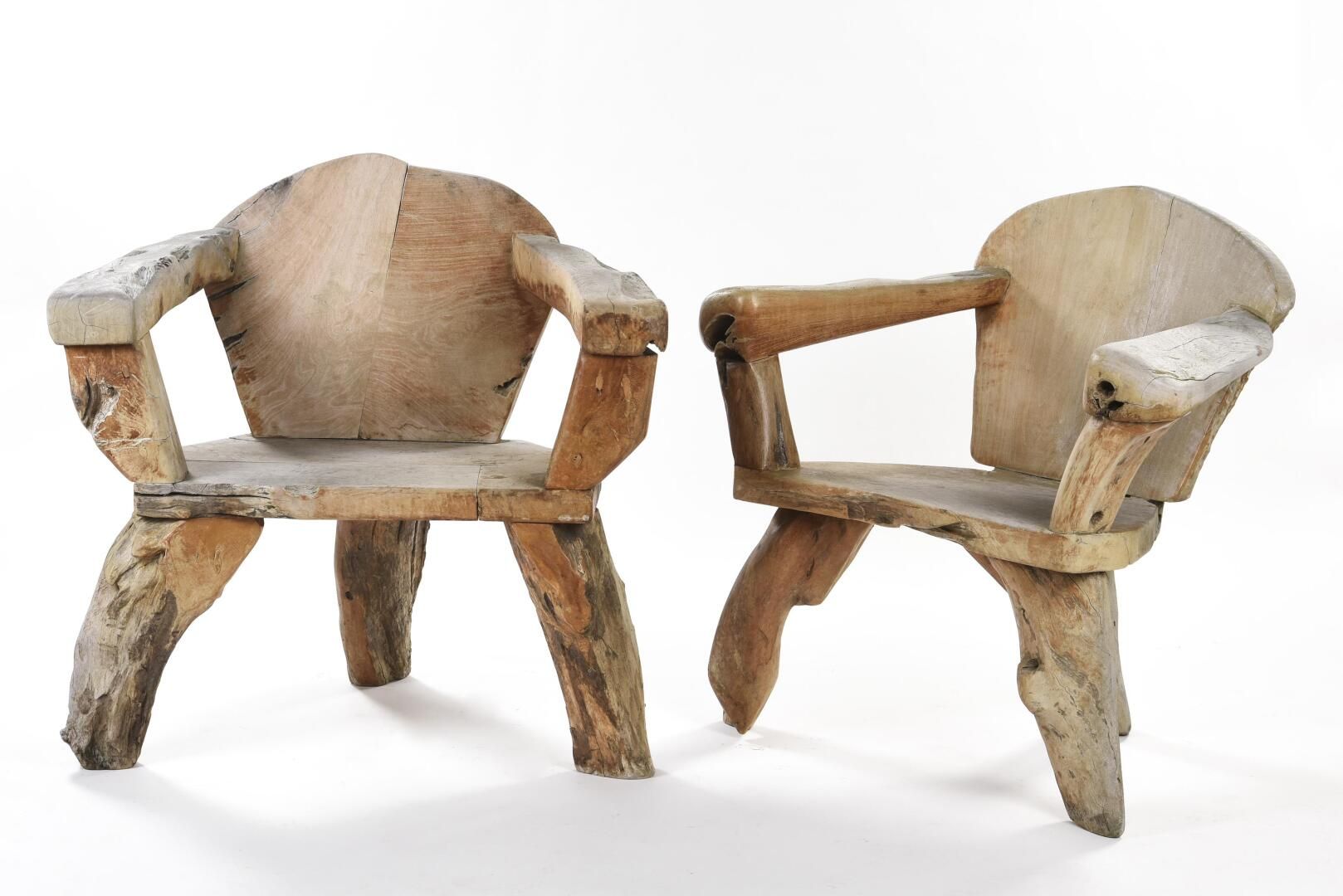 The other issue is the inappropriateness of the chairs provided in most hotel/motel rooms – often rickety hard backed chairs or ludicrously low armchairs. Even rooms that purport to have a work desk rarely have a suitable chair on wheels. From my point of view, a decent office chair makes life much easier and I suspect for others, avoiding having to push a normal chair back and forth from a desk would be welcome.
The other issue is the inappropriateness of the chairs provided in most hotel/motel rooms – often rickety hard backed chairs or ludicrously low armchairs. Even rooms that purport to have a work desk rarely have a suitable chair on wheels. From my point of view, a decent office chair makes life much easier and I suspect for others, avoiding having to push a normal chair back and forth from a desk would be welcome.
 The following is from the Boston Globe response to an edited account of the mass shooting in Maine. I have spent some glorious times in Maine, although I have never been to Lewiston as far as I can remember.
The following is from the Boston Globe response to an edited account of the mass shooting in Maine. I have spent some glorious times in Maine, although I have never been to Lewiston as far as I can remember.

 The current furore about the silica-based material, which has become fashionable for kitchen countertops, but in the process of cutting the material to size, creates a silica-laden atmosphere. When I was entering my career as a doctor, silicosis was a major occupational health disease, contracted then by miners and quarry workers. It received so much attention and publicity as a cause of respiratory disease there was no controversy within the health profession as to this association. A major associated problem was that most of workers then were also cigarette smokers; the danger of cigarette smoking was comprehensively exposed by the work of Doll in the 1970s.
The current furore about the silica-based material, which has become fashionable for kitchen countertops, but in the process of cutting the material to size, creates a silica-laden atmosphere. When I was entering my career as a doctor, silicosis was a major occupational health disease, contracted then by miners and quarry workers. It received so much attention and publicity as a cause of respiratory disease there was no controversy within the health profession as to this association. A major associated problem was that most of workers then were also cigarette smokers; the danger of cigarette smoking was comprehensively exposed by the work of Doll in the 1970s. At a dinner at the White House on Tuesday, Mr. Biden and first lady Jill Biden presented the Prime Minister with an antique writing desk, designed by an American company in Michigan, the White House said. The first lady gave (Jodie) Haydon a hand-crafted green enamel and diamond necklace.
At a dinner at the White House on Tuesday, Mr. Biden and first lady Jill Biden presented the Prime Minister with an antique writing desk, designed by an American company in Michigan, the White House said. The first lady gave (Jodie) Haydon a hand-crafted green enamel and diamond necklace.

 It seems that some very wealthy people collect art work; Anthony has collected people on the simple logic that everybody has a price. When you think of Paul Keating, who prided himself on his independence – a flawless visage of isolated supremacy, one could be surprised with his reported Pratt retainer of $25,000 smackers a month for his view from his Eastern suburban eyrie – $300,000 a year. For what? But then what does Mona Lisa do for you? The fact that Anthony perceives Keating as part of his collection. Some of his reported purchases, like Rudy Giuliani, have been shown to be duds, but he uses his milestones such as birthdays to parade his collection.
It seems that some very wealthy people collect art work; Anthony has collected people on the simple logic that everybody has a price. When you think of Paul Keating, who prided himself on his independence – a flawless visage of isolated supremacy, one could be surprised with his reported Pratt retainer of $25,000 smackers a month for his view from his Eastern suburban eyrie – $300,000 a year. For what? But then what does Mona Lisa do for you? The fact that Anthony perceives Keating as part of his collection. Some of his reported purchases, like Rudy Giuliani, have been shown to be duds, but he uses his milestones such as birthdays to parade his collection.






 Matilda Day
Matilda Day
 Anyway, these anecdotes are by-the-by. The New England Highway resembles the Hume Highway of the 1960s in being two lanes passing through every little village, with restricted speeding. The only exception was Scone where, given the overall lousy standard of the bitumen, we found here a smooth stretch. I presumed the Scone bypass was relatively new, and on checking, it was completed three years ago. To finish this picture, there are occasional overtaking lanes but very few rest areas, and travelling north these always seem to be on the other side of the road.
Anyway, these anecdotes are by-the-by. The New England Highway resembles the Hume Highway of the 1960s in being two lanes passing through every little village, with restricted speeding. The only exception was Scone where, given the overall lousy standard of the bitumen, we found here a smooth stretch. I presumed the Scone bypass was relatively new, and on checking, it was completed three years ago. To finish this picture, there are occasional overtaking lanes but very few rest areas, and travelling north these always seem to be on the other side of the road.

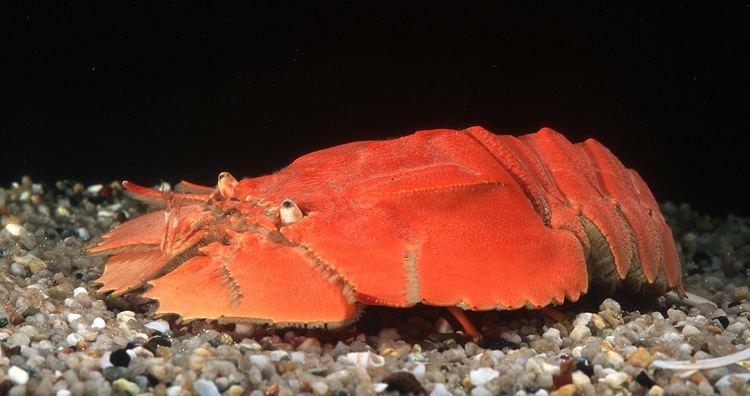

 Squares and Spanish Moss
Squares and Spanish Moss


 The difficulty with those who lead and do it so publicly, as Keating did, is that the electorate has limited tolerance, manifested as the “tall poppy syndrome”. First used in the last century, it refers to the habit of one of the Kings of Rome, Tarquinius Superbus, of hacking the heads off his subjects when they emerged too much above the Parapet of Achievement.
The difficulty with those who lead and do it so publicly, as Keating did, is that the electorate has limited tolerance, manifested as the “tall poppy syndrome”. First used in the last century, it refers to the habit of one of the Kings of Rome, Tarquinius Superbus, of hacking the heads off his subjects when they emerged too much above the Parapet of Achievement.
 I remember in Moorhouse’s book about the Burke and Wills expedition, “Coopers Creek”, a reference made to nardoo – seeds from a fern which the local Aboriginal people ground to form a type of primitive paste. However, there are some who say that nardoo is in fact toxic if improperly prepared, causing beri-beri, because it contains the enzyme thiaminase which destroys vitamin B1. There was never a bread industry, which is exemplified by the images in this latest documentary, which shows the grinding of seeds in a coolamon but never any resultant bread.
I remember in Moorhouse’s book about the Burke and Wills expedition, “Coopers Creek”, a reference made to nardoo – seeds from a fern which the local Aboriginal people ground to form a type of primitive paste. However, there are some who say that nardoo is in fact toxic if improperly prepared, causing beri-beri, because it contains the enzyme thiaminase which destroys vitamin B1. There was never a bread industry, which is exemplified by the images in this latest documentary, which shows the grinding of seeds in a coolamon but never any resultant bread.

 I’m reading A Small Town in Germany – one of the many spy novels written by John Le Carré, first published in 1968 at the height of the Cold War. Le Carré was in himself a man who worked in the spy industry, and his writing reflects the details which is a perfect definition of the tedium of the job. I have never been a devotee of Le Carré, although I recognise the perfect encapsulation of a group of mostly men, inured to deception and conspiracy.
I’m reading A Small Town in Germany – one of the many spy novels written by John Le Carré, first published in 1968 at the height of the Cold War. Le Carré was in himself a man who worked in the spy industry, and his writing reflects the details which is a perfect definition of the tedium of the job. I have never been a devotee of Le Carré, although I recognise the perfect encapsulation of a group of mostly men, inured to deception and conspiracy. I thought about wandering into the world of espionage, and as I was to find out, Trinity College was a recruiting ground for ASIO. There was a particular night when a former senior student, who was “in his cups” gave a hilarious rendition of his life within ASIO, but we were all also in varying degrees of intoxication, and thus the next morning only the memory of this very engaging night remained.
I thought about wandering into the world of espionage, and as I was to find out, Trinity College was a recruiting ground for ASIO. There was a particular night when a former senior student, who was “in his cups” gave a hilarious rendition of his life within ASIO, but we were all also in varying degrees of intoxication, and thus the next morning only the memory of this very engaging night remained.


 For a couple of years in the 1980s, we spent Christmas at the Savoy Hotel in a suite which enabled us to look straight down the Thames and Christmas lunch was in the Savoy Grill. One of the offspring who had taken a year off to fence in Paris and Budapest (he was actually based in the latter but had a great many contacts in the stylishly named Racing club in Paris) came over to London to have lunch with us. The food was excellent; the wine flowed; the jollification found him taking off his jacket. The Christmas cracker, suitably extravagant, yielded a parachuting man. Never mind that the son draped the parachute, to which a tiny figurine was attached, on his head so that the figurine was dangling over his nose. One of the waiters sidled up to him and murmured: “It appears that Sir’s jacket has slipped from Sir’s shoulders. Perhaps I could help Sir to put Sir’s jacket back on.”
For a couple of years in the 1980s, we spent Christmas at the Savoy Hotel in a suite which enabled us to look straight down the Thames and Christmas lunch was in the Savoy Grill. One of the offspring who had taken a year off to fence in Paris and Budapest (he was actually based in the latter but had a great many contacts in the stylishly named Racing club in Paris) came over to London to have lunch with us. The food was excellent; the wine flowed; the jollification found him taking off his jacket. The Christmas cracker, suitably extravagant, yielded a parachuting man. Never mind that the son draped the parachute, to which a tiny figurine was attached, on his head so that the figurine was dangling over his nose. One of the waiters sidled up to him and murmured: “It appears that Sir’s jacket has slipped from Sir’s shoulders. Perhaps I could help Sir to put Sir’s jacket back on.”


 The “mud match” was cracking on, and there was much student activity, when the inevitable happened. Somebody broke the fire alarm in the Union, and before long, with bells ringing, the fire cart arrived driving through the milling mob in front of the Union, where it stopped. Before the firemen could get out of their vehicle, some idiot student dumped a bucket of mud over them.
The “mud match” was cracking on, and there was much student activity, when the inevitable happened. Somebody broke the fire alarm in the Union, and before long, with bells ringing, the fire cart arrived driving through the milling mob in front of the Union, where it stopped. Before the firemen could get out of their vehicle, some idiot student dumped a bucket of mud over them. The core of these later proposals was universality. Every Australian was entitled to free care – medical and hospital care; and for pensioners and other poor people identified, free drugs provided they were on a benefit schedule or made available through a hospital pharmacy. The government set a tax levy to cover the cost of Medicare.
The core of these later proposals was universality. Every Australian was entitled to free care – medical and hospital care; and for pensioners and other poor people identified, free drugs provided they were on a benefit schedule or made available through a hospital pharmacy. The government set a tax levy to cover the cost of Medicare.
 When you destroy that trust, then in the end you believe in nobody. You are in a dark forest inhabited by the symbols of demons or warlocks or any of the representations of Beelzebub, because they are the enemy – and you alone are the symbol of purity. What has happened to America is a man with artificial golden mane, golden face, golden geegaws (unsurprising given from ancient times religious icons are smothered in gold) burst upon a country, already conspiracy ripened by the pastors of the Second Coming and satanic interpretations of the Book of Revelations. Coupled this with those playing in the shadow isolation of video violence and how can anybody trust anybody. In the end the one supreme person who did not trust, who never trusted the law, did not understand impartiality reigns supreme with all the bodies whom he/she/it did not trust littered all around.
When you destroy that trust, then in the end you believe in nobody. You are in a dark forest inhabited by the symbols of demons or warlocks or any of the representations of Beelzebub, because they are the enemy – and you alone are the symbol of purity. What has happened to America is a man with artificial golden mane, golden face, golden geegaws (unsurprising given from ancient times religious icons are smothered in gold) burst upon a country, already conspiracy ripened by the pastors of the Second Coming and satanic interpretations of the Book of Revelations. Coupled this with those playing in the shadow isolation of video violence and how can anybody trust anybody. In the end the one supreme person who did not trust, who never trusted the law, did not understand impartiality reigns supreme with all the bodies whom he/she/it did not trust littered all around.




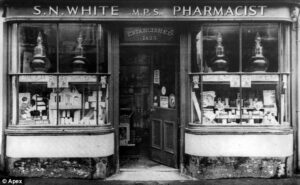




 Whoever wins will be faced with having to govern, unlike what has happened over the past decade. This was the time of the lotus land; when the rich became richer and the dispossessed were harassed by false gods and more and more were caught in the culture of poverty.
Whoever wins will be faced with having to govern, unlike what has happened over the past decade. This was the time of the lotus land; when the rich became richer and the dispossessed were harassed by false gods and more and more were caught in the culture of poverty.
 Last week, we were driving into the Northland town of Kerikeri, when we saw an orchard named Persimmon Patch. I had never been into a persimmon orchard, even though I had worked around the fruit growing areas of Victoria, where I would have expected to find them growing, if not in a dedicated orchard. I had once seen a persimmon tree growing in a suburban garden in Melbourne bearing fruit. Not much comparison.
Last week, we were driving into the Northland town of Kerikeri, when we saw an orchard named Persimmon Patch. I had never been into a persimmon orchard, even though I had worked around the fruit growing areas of Victoria, where I would have expected to find them growing, if not in a dedicated orchard. I had once seen a persimmon tree growing in a suburban garden in Melbourne bearing fruit. Not much comparison.
 No one should be surprised that the “big lie” has become gospel in White evangelical churches. The New York Times reports: “In the 17 months since the presidential election, pastors at these churches have preached about fraudulent votes and vague claims of election meddling. … For these church leaders, Mr. Trump’s narrative of the 2020 election has become a prominent strain in an apocalyptic vision of the left running amok.”
No one should be surprised that the “big lie” has become gospel in White evangelical churches. The New York Times reports: “In the 17 months since the presidential election, pastors at these churches have preached about fraudulent votes and vague claims of election meddling. … For these church leaders, Mr. Trump’s narrative of the 2020 election has become a prominent strain in an apocalyptic vision of the left running amok.”








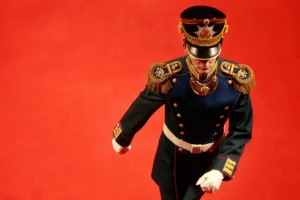


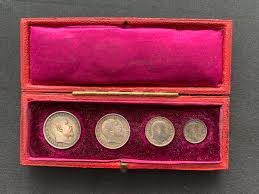


 Then the drumroll – the achievement – supporting our craft brewers, no less. Set out in his brochure, he points out that he actually introduced a Private Members Bill to reform excise tax, and in his own words “end discrimination”. Reducing excise on grog is somewhat at odds with his first week of campaigning which concentrated on health matters.
Then the drumroll – the achievement – supporting our craft brewers, no less. Set out in his brochure, he points out that he actually introduced a Private Members Bill to reform excise tax, and in his own words “end discrimination”. Reducing excise on grog is somewhat at odds with his first week of campaigning which concentrated on health matters. When I devised the “Murray to the Mountains” intern training program in North-East Victoria early in the last decade, I planned that each intern would spend 20 weeks in general practice in their first year, and the practices were linked to the local hospital, where they would be confronted with emergencies as well as consolidating their medical, surgical and emergency terms at the local regional hospital. As many of the regional specialists visited these general practice health services, this model enabled the interns to gain even more experience. There were none of these extravagant waiting times to see a doctor and weekends were covered.
When I devised the “Murray to the Mountains” intern training program in North-East Victoria early in the last decade, I planned that each intern would spend 20 weeks in general practice in their first year, and the practices were linked to the local hospital, where they would be confronted with emergencies as well as consolidating their medical, surgical and emergency terms at the local regional hospital. As many of the regional specialists visited these general practice health services, this model enabled the interns to gain even more experience. There were none of these extravagant waiting times to see a doctor and weekends were covered. I have experienced medical care in a remote part of Tasmania. I needed the visit from a paramedic, not a doctor, at four in the morning. The paramedic had to come from a neighbouring town. He was quicker in responding than was the case with a similar call in Sydney, where the paramedic came from another suburb. What would a community health service along the ephemeral good-feel media announcement done for me – in a word nothing – at least not at 4.00 am as the paramedic did.
I have experienced medical care in a remote part of Tasmania. I needed the visit from a paramedic, not a doctor, at four in the morning. The paramedic had to come from a neighbouring town. He was quicker in responding than was the case with a similar call in Sydney, where the paramedic came from another suburb. What would a community health service along the ephemeral good-feel media announcement done for me – in a word nothing – at least not at 4.00 am as the paramedic did.
 It really is a bit pathetic; building one sporting venue after another when Australia needs to seriously address climate change – and the electrification of our cars, trucks and buses is just one of the priorities to accommodate this need. This is a nation with a trillion-dollar debt, financing an indulgent yet flimsy infrastructure so a few of one’s mates can own expensive jets, buy huge boats to cruise The Mediterranean and when the day is done, après-ski at Aspen.
It really is a bit pathetic; building one sporting venue after another when Australia needs to seriously address climate change – and the electrification of our cars, trucks and buses is just one of the priorities to accommodate this need. This is a nation with a trillion-dollar debt, financing an indulgent yet flimsy infrastructure so a few of one’s mates can own expensive jets, buy huge boats to cruise The Mediterranean and when the day is done, après-ski at Aspen.

